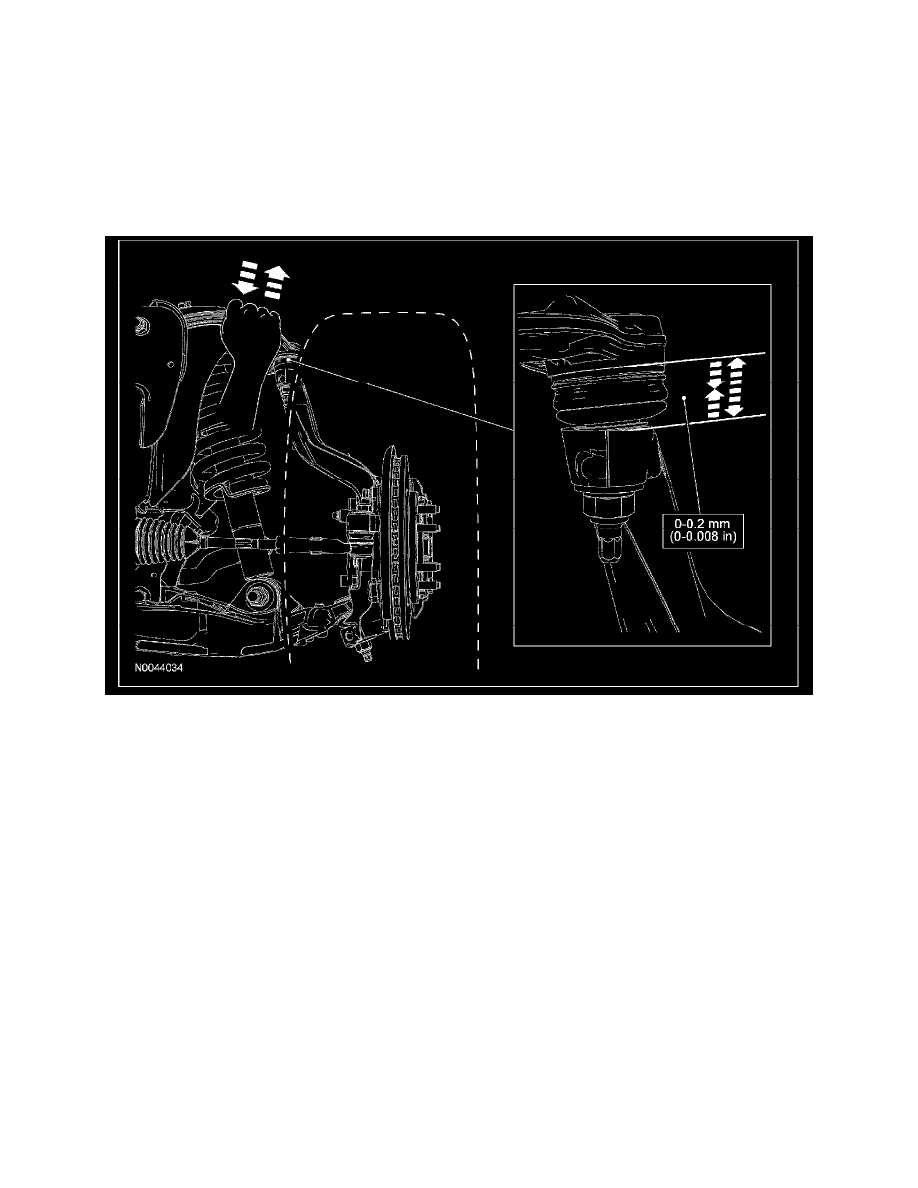Navigator 4WD V8-5.4L VIN 5 (2006)

^
If the deflection meets the specification, continue with the procedure.
7. CAUTION: Do not use any tools or equipment to move the wheel and tire assembly or suspension components while checking for relative
movement. Suspension damage can occur. The use of tools or equipment will also create relative movement that may not exist when using hand
force.
Relative movement must be measured using hand force only.
^
Inspect the ball Joint for relative movement by alternately pulling downward and pushing upward on the upper control arm by hand. Note any
relative vertical movement between the wheel knuckle and upper arm at the upper ball joint.
^
If relative movement is not felt or seen, the ball Joint is OK. Do not install a new ball joint.
^
If relative movement is found, continue with Step 8.
8. NOTE: In order to obtain an accurate measurement, the dial indicator should be aligned as close as possible with the vertical axis of the ball joint.
To measure ball joint deflection, attach a suitable dial indicator with a flexible arm between the upper control arm and the wheel knuckle or ball
Joint stud.
9. Measure the ball joint deflection while an assistant pushes up and then pulls down on the upper control arm, by hand.
^
If the deflection exceeds the specification, a new ball joint must be installed.
^
If the deflection meets the specification, no further action is required.
